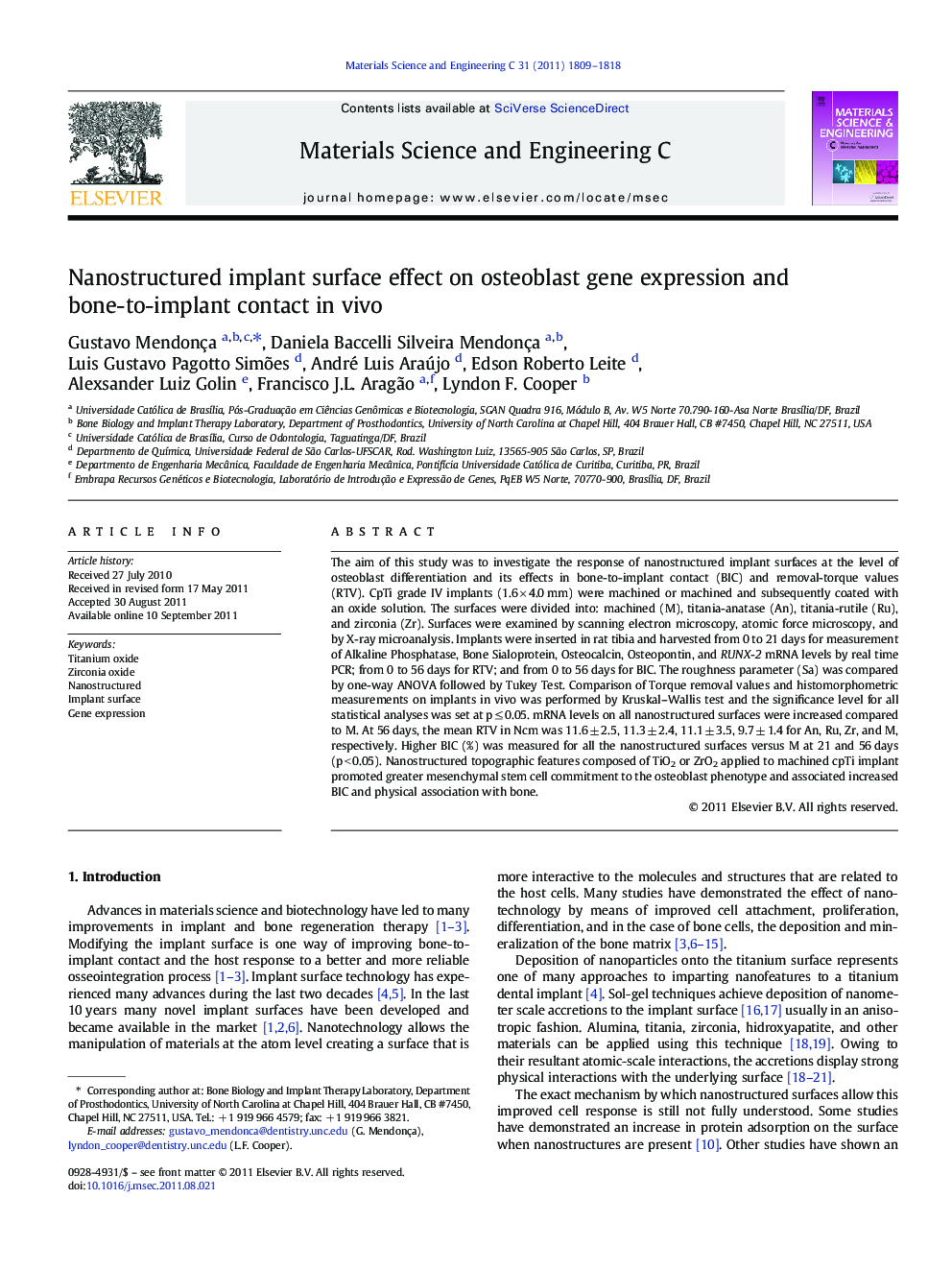| کد مقاله | کد نشریه | سال انتشار | مقاله انگلیسی | نسخه تمام متن |
|---|---|---|---|---|
| 1429836 | 987186 | 2011 | 10 صفحه PDF | دانلود رایگان |

The aim of this study was to investigate the response of nanostructured implant surfaces at the level of osteoblast differentiation and its effects in bone-to-implant contact (BIC) and removal-torque values (RTV). CpTi grade IV implants (1.6 × 4.0 mm) were machined or machined and subsequently coated with an oxide solution. The surfaces were divided into: machined (M), titania-anatase (An), titania-rutile (Ru), and zirconia (Zr). Surfaces were examined by scanning electron microscopy, atomic force microscopy, and by X-ray microanalysis. Implants were inserted in rat tibia and harvested from 0 to 21 days for measurement of Alkaline Phosphatase, Bone Sialoprotein, Osteocalcin, Osteopontin, and RUNX-2 mRNA levels by real time PCR; from 0 to 56 days for RTV; and from 0 to 56 days for BIC. The roughness parameter (Sa) was compared by one-way ANOVA followed by Tukey Test. Comparison of Torque removal values and histomorphometric measurements on implants in vivo was performed by Kruskal–Wallis test and the significance level for all statistical analyses was set at p ≤ 0.05. mRNA levels on all nanostructured surfaces were increased compared to M. At 56 days, the mean RTV in Ncm was 11.6 ± 2.5, 11.3 ± 2.4, 11.1 ± 3.5, 9.7 ± 1.4 for An, Ru, Zr, and M, respectively. Higher BIC (%) was measured for all the nanostructured surfaces versus M at 21 and 56 days (p < 0.05). Nanostructured topographic features composed of TiO2 or ZrO2 applied to machined cpTi implant promoted greater mesenchymal stem cell commitment to the osteoblast phenotype and associated increased BIC and physical association with bone.
► Nanostructured surfaces using a sol-gel technique coated cpTi with TiO2 or ZrO2.
► Evaluated molecular and mechanical effect of nanofeatures in vivo in rat tibiae.
► Nanofeatures improved the differentiation of rat MSCs into osteoblasts.
► Nanofeatures improved increased bone-to-implant contact and removal torque values.
► TiO2 or ZrO2 nanofeatures improved the biological response of machined titanium.
Journal: Materials Science and Engineering: C - Volume 31, Issue 8, 1 December 2011, Pages 1809–1818